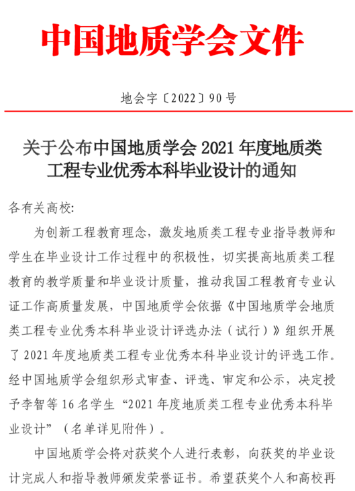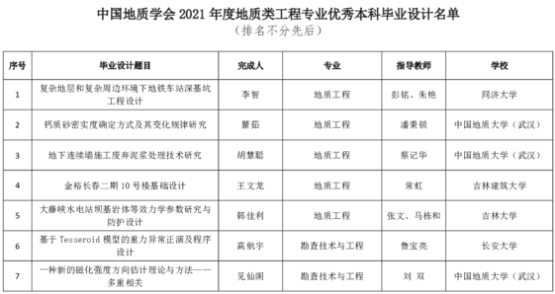To promote the innovations inengineering education and inspire the enthusiasm of guidance teachers and students in the process of graduation design work, to improve the quality of teaching and graduation design, to facilitate the high-quality development of engineering education professional certification work in China, Geological Society of China carried out the selection of outstanding undergraduate graduation design for geological engineering majors nationwide.This year, Geological Society of China has received a total of 85 excellent candidate materials recommended by various geological majors nationwide. According to theSelection Method of Excellent Undergraduate Graduation Design of Geological Engineering Major of Geological Society of China (for TrialImplementation), a total of 16 outstanding undergraduate graduation design were selected after formal examination, initial evaluation and finalevaluation.
The graduation design,namedForward Modeling and Programming of Gravity Anomalies Based on TesseroidModel, completed by Gao Xingyu of Exploration Technology and Engineering major under the guidance of associate professor Lu Baoliang from the Department of Geophysics, won the 2021 annual outstanding undergraduate graduation design of geological engineering. Based on Tesseroid model division and its gravity and magnetic forward modeling theory, this paper used the method of Gauss-Legendre integration to simulate the gravity field of Tesseroid element volume fraction numerically, and carried out systematic experiment and comparative analysis of the gravity field of different size and observation heights.It is found that the size of the model and the observation height have significant influence on the accuracy of the calculation results.At the same time, in order to explore the Tesseroid unit volume integral method in the practical feasibility of scientific research, this paper carried out the integral forward modeling of gravity field to the surface height of Qinghai-Tibet Plateau. Also, it discussed the result of gradients and tensors as well as the actual gravity field in this region, providing a certain explanation and comparison data for the interpretation and forward modeling of the gravity field of the Qinghai-Tibet Plateau in thefuture.




Reviewed by Jing Lin, photos and articles provided by Lu Baoliang and JiXinlin

 Official website
Official website Chinese
Chinese